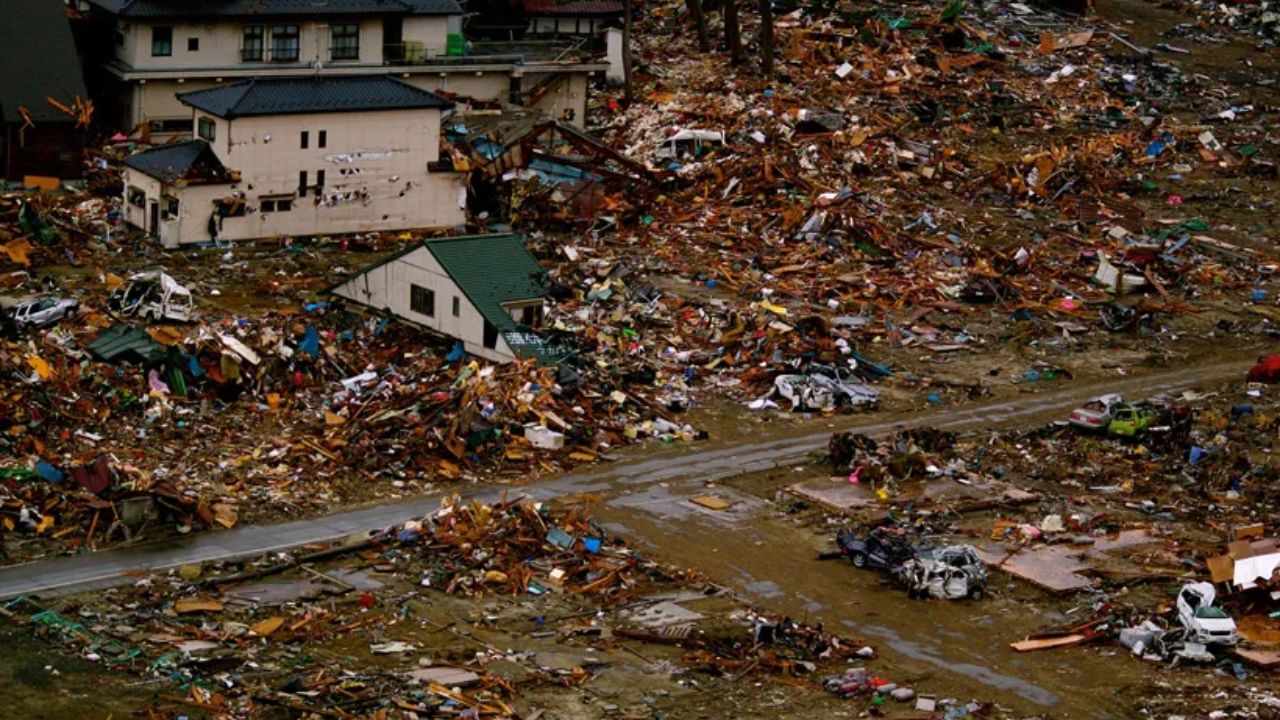California is known for its sunny beaches, scenic coastline, and diverse marine life. But the Golden State is also vulnerable to the destructive power of tsunamis, which are giant waves caused by earthquakes, volcanic eruptions, or landslides under the ocean.
Tsunamis can travel across the Pacific Ocean at speeds of up to 500 miles per hour, reaching the shore with little warning and causing flooding, damage, and death. In this article, we will explore some of the biggest tsunamis that have hit California in its history, and how the state prepares for future events.
The Cascadia Tsunami of 1700
The oldest and largest tsunami on record in California occurred on January 26, 1700, when a massive earthquake struck the Cascadia Subduction Zone, a 600-mile-long fault that runs from northern California to British Columbia. The quake, estimated to be between magnitude 8 and 9, unleashed a series of waves that inundated the West Coast and reached as far as Japan.
The tsunami was so powerful that it left deposits of sand and shells up to 20 feet above sea level in some places, and eroded cliffs and trees along the coast. The event was not documented by Europeans at the time, but scientists have reconstructed it using geologic evidence, oral histories from Native Americans, and Japanese records of the waves that hit their shores later that day.
The Santa Barbara Tsunami of 1812
On December 21, 1812, a magnitude 7.2 earthquake occurred in the Santa Barbara Channel, off the coast of southern California. The quake generated a local tsunami that flooded and damaged low-lying areas of Santa Barbara and Ventura counties. The waves also affected nearby ships, some of which were tossed inland or sunk.
The tsunami was witnessed by Spanish missionaries, who recorded the event in their diaries. One of them wrote: “At 10 o’clock, the sea rose to an extraordinary height, and its terrible noise was heard at a great distance. It broke over the beach with such impetuosity that it lifted some boats that were on the shore, and carried them to the houses, breaking some and leaving others on the roofs”.
The Alaska Tsunami of 1946
On April 1, 1946, a magnitude 8.6 earthquake occurred in the Aleutian Islands of Alaska, triggering a trans-Pacific tsunami that affected many coastal regions, including California. The waves reached heights of up to 20 feet in some locations, causing flooding, erosion, and damage to buildings and infrastructure. The tsunami also claimed the lives of 165 people, mostly in Hawaii and Alaska, but also in California. One of the worst-hit areas was Half Moon Bay, a small town on the Central Coast, where the water surged about 1,000 feet inland, destroying homes, businesses, and farms. The tsunami also damaged the harbor of Santa Cruz, where boats were smashed and docks were torn apart .
The Good Friday Tsunami of 1964
The most devastating tsunami in U.S. history occurred on March 28, 1964, when a magnitude 9.2 earthquake, the second-largest ever recorded, struck the Prince William Sound of Alaska. The quake generated a massive tsunami that swept across the Pacific, affecting coastal communities from Alaska to California. The waves reached heights of up to 220 feet in some places, and caused widespread destruction and death.
The death toll was estimated at 131, mostly in Alaska, but also in Oregon and California. The hardest-hit town in California was Crescent City, a small port near the Oregon border, where 11 people were killed and 289 buildings were damaged or destroyed. The waves flooded nearly 30 city blocks, reaching up to 2 miles inland. The tsunami also caused significant damage to other coastal towns, such as Santa Cruz, Morro Bay, and San Francisco .
The Tohoku Tsunami of 2011
The most recent major tsunami to hit California was triggered by a magnitude 9.0 earthquake that occurred on March 11, 2011, in the Tohoku region of Japan. The quake unleashed a catastrophic tsunami that killed about 18,000 people and caused a nuclear meltdown at the Fukushima Daiichi power plant. The tsunami also traveled across the Pacific, reaching the shores of California about 10 hours later.
The waves were not as high as those in Japan, but they still caused strong currents and surges that damaged harbors, boats, and infrastructure along the coast. One death was reported in connection with the tsunami, a man who was swept away by the waves while taking photos at the mouth of the Klamath River in Del Norte County. The worst damage was reported in Crescent City and Santa Cruz, where millions of dollars were lost due to the destruction of docks, piers, and vessels .
Conclusion
Tsunamis are rare but powerful natural phenomena that pose a serious threat to California’s coastal communities. The state has experienced several large tsunamis in its history, some of which have caused death and destruction. To prepare for future events, the state has developed a tsunami warning system, a network of sirens, signs, and evacuation routes, and a public education program to inform residents and visitors about the risks and how to respond.
The best way to survive a tsunami is to be aware of the signs, such as a strong earthquake, a sudden change in sea level, or a loud roar from the ocean, and to move to higher ground as soon as possible. By being prepared and alert, Californians can reduce the impact of tsunamis and protect themselves and their loved ones.
